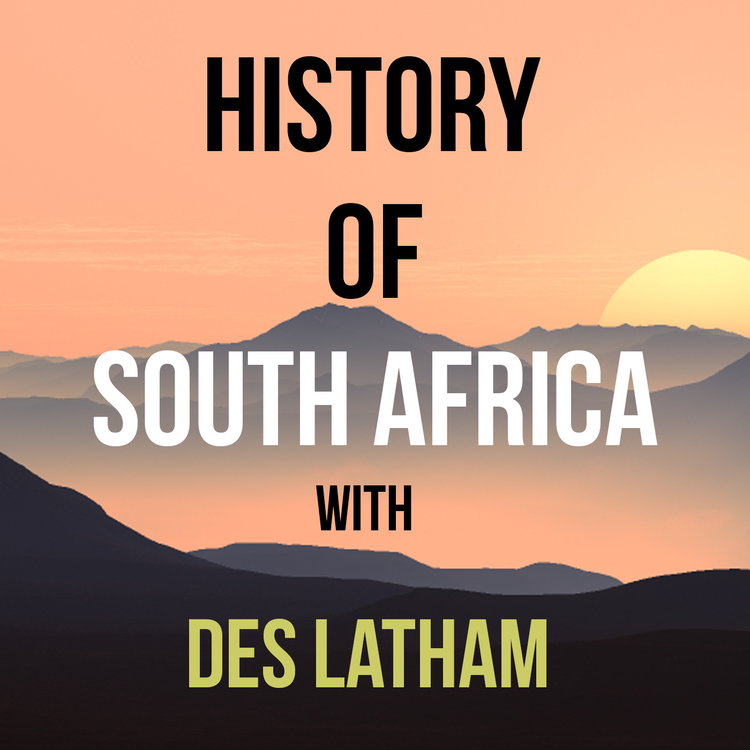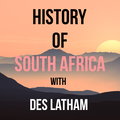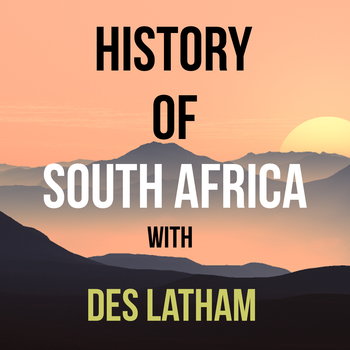
Episode 158 - Venda kingdoms and the Lemba Yemeni enigma
Loading player...
This is episode 158 and we’re taking an epic regional tour into the along the Limpopo River to meet with the Venda and other groups of folks who hail from the province we now call Limpopo.
Thanks to listener Mushe for the suggestion.
By the mid-fifteenth century Shona-speaking immigrants from Zimbabwe settled across the Limpopo River and interacted with the local Sotho inhabitants. As a result of this interaction, Shona and Sotho led to what is now regarded as a common Venda identity by the mid-sixteenth century.
Venda-speaking people live mainly in the Soutpansberg area and southern Zimbabwe, but they also once lived in south-western Mozambique and north-eastern Botswana.
Venda grammar and phonology is similar to Shona, particularly western Shona and Venda vocabulary has its greatest equivalent in Sotho. Phonology is the branch of linguistics that deals with systems of sounds within a language or between different languages.
According to most ethnographers it is not only the Venda language, but also certain customs, such as the domba pre-marital school, that distinguish them from surrounding Shona, Sotho-Tswana and Tsonga communities.
First a quick refresh. We heard in one of earlier podcasts about the Mapungubwe kingdom which lasted until the 13th Century - following which Shona speaking people’s moved southwards into the Soutpansberg region over the centuries.
Archaeologists have established that by the fourteenth century, or the late Mapungubwe period and what is known as and the Moloko, the early post Mapungubwe kingdoms emerged in northern Transvaal. This is where the forebears of the Venda come in.
Zimbabwean ceramics help a lot here, they were produced by Shona speakers and their fourteenth century distribution demarcated the Shona trading empire centred around Great
Zimbabwe.
The rulers at Great Zimbabwe controlled most of the country between the Limpopo and Zambezi rivers until smaller trading states broke away in the fifteenth century. I’ve covered this in great detail in Episodes 5, 6 and 7 if you want to refresh memories.
We also know that trade between these early kingdoms and the east coast was established, goods like gold, ivory, and copper were traded with Arabic and Portuguese merchants. The Venda were directly impacted by this trade, along with another unique group called the Lemba who are directly related to ancestors who actually traded all the way from Yemen in the Middle East. More about them in a few minutes.
Ceramics help us piece together the past more effectively, the period of Shona and Sotho interaction eventually involved into more than a mere overlap of these ceramic styles, because for the first time different stylistic elements appeared on the same vessels.
These Letaba pots have also been unearthed in the eastern Transvaal or Limpopo Province as its now known. It is interesting that these ceramics are still produced today, these Letaba pots and ceramics are made by the Venda, the Tsonga, the Ndebele, but anthropologists and historians believe the style itself is distinctly Venda in character.
The Venda kingdom pretty much stretched from the Limpopo River in the north to the Olifants and Ngwenya River, or Crocodile River, in the south, but by the time Louis Trichardt rode through their land in 1836, the great Venda empire had almost vanished, torn up by external threats — damaged by the amaNdebele and even amaZulu raiders.
The second group who could be found in this territory are the Lemba. They remain one of the self-defining groups of the region who have a stunning origin story. I am going to tread quite carefully here because there’s science and then there’s oral tradition. As you’ll hear, the Lemba believe they are related to the lost Tribes of Israel, and have recently demanded that they be recognized as such.
Their narrative and origin story links them to the Middle East and the Judaism and there is DNA evidence to back them up.
Thanks to listener Mushe for the suggestion.
By the mid-fifteenth century Shona-speaking immigrants from Zimbabwe settled across the Limpopo River and interacted with the local Sotho inhabitants. As a result of this interaction, Shona and Sotho led to what is now regarded as a common Venda identity by the mid-sixteenth century.
Venda-speaking people live mainly in the Soutpansberg area and southern Zimbabwe, but they also once lived in south-western Mozambique and north-eastern Botswana.
Venda grammar and phonology is similar to Shona, particularly western Shona and Venda vocabulary has its greatest equivalent in Sotho. Phonology is the branch of linguistics that deals with systems of sounds within a language or between different languages.
According to most ethnographers it is not only the Venda language, but also certain customs, such as the domba pre-marital school, that distinguish them from surrounding Shona, Sotho-Tswana and Tsonga communities.
First a quick refresh. We heard in one of earlier podcasts about the Mapungubwe kingdom which lasted until the 13th Century - following which Shona speaking people’s moved southwards into the Soutpansberg region over the centuries.
Archaeologists have established that by the fourteenth century, or the late Mapungubwe period and what is known as and the Moloko, the early post Mapungubwe kingdoms emerged in northern Transvaal. This is where the forebears of the Venda come in.
Zimbabwean ceramics help a lot here, they were produced by Shona speakers and their fourteenth century distribution demarcated the Shona trading empire centred around Great
Zimbabwe.
The rulers at Great Zimbabwe controlled most of the country between the Limpopo and Zambezi rivers until smaller trading states broke away in the fifteenth century. I’ve covered this in great detail in Episodes 5, 6 and 7 if you want to refresh memories.
We also know that trade between these early kingdoms and the east coast was established, goods like gold, ivory, and copper were traded with Arabic and Portuguese merchants. The Venda were directly impacted by this trade, along with another unique group called the Lemba who are directly related to ancestors who actually traded all the way from Yemen in the Middle East. More about them in a few minutes.
Ceramics help us piece together the past more effectively, the period of Shona and Sotho interaction eventually involved into more than a mere overlap of these ceramic styles, because for the first time different stylistic elements appeared on the same vessels.
These Letaba pots have also been unearthed in the eastern Transvaal or Limpopo Province as its now known. It is interesting that these ceramics are still produced today, these Letaba pots and ceramics are made by the Venda, the Tsonga, the Ndebele, but anthropologists and historians believe the style itself is distinctly Venda in character.
The Venda kingdom pretty much stretched from the Limpopo River in the north to the Olifants and Ngwenya River, or Crocodile River, in the south, but by the time Louis Trichardt rode through their land in 1836, the great Venda empire had almost vanished, torn up by external threats — damaged by the amaNdebele and even amaZulu raiders.
The second group who could be found in this territory are the Lemba. They remain one of the self-defining groups of the region who have a stunning origin story. I am going to tread quite carefully here because there’s science and then there’s oral tradition. As you’ll hear, the Lemba believe they are related to the lost Tribes of Israel, and have recently demanded that they be recognized as such.
Their narrative and origin story links them to the Middle East and the Judaism and there is DNA evidence to back them up.

